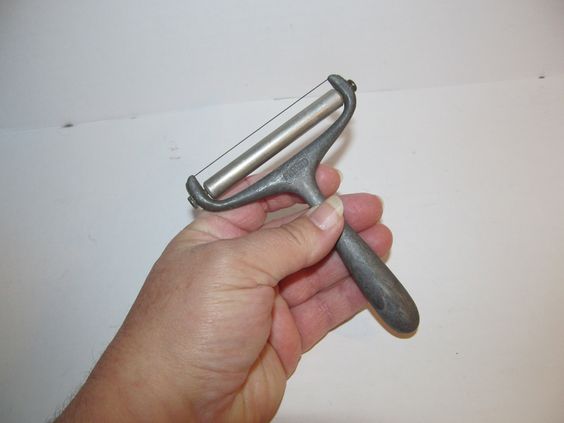Unveiling the Mystery Behind this Item
ave you ever stumbled upon an object that piqued your curiosity, leaving you intrigued by its purpose and origin? Today, we have an extraordinary item to share with you. Get ready to be amazed as we unravel the enigma behind this unique tool.

The cheese slicer, a humble yet indispensable tool in both home kitchens and professional culinary settings, boasts a history as rich and varied as the cheeses it cuts. This simple device, designed for slicing through cheese with precision and ease, emerged from a blend of necessity and innovation, reflecting broader trends in culinary practices and dairy consumption.

The origins of the cheese slicer trace back to the early 20th century in Norway, a country renowned for its dairy products and cheese-making traditions. The invention is credited to Thor Bjørklund, a Norwegian carpenter and inventor, who in 1925 became frustrated with the difficulty of cutting consistent slices of cheese using a knife. Drawing upon his carpentry skills, Bjørklund devised the first cheese slicer, inspired by a carpenter’s plane. His design featured a wooden handle attached to a metal blade with a slotted, adjustable guide, allowing for smooth, even slices of cheese without the need for a knife. The invention was not only a testament to Bjørklund’s ingenuity but also addressed a common kitchen dilemma, revolutionizing the way cheese was served and enjoyed.
Bjørklund’s cheese slicer quickly gained popularity in Norway and soon after, across Europe and the United States. The device’s appeal lay in its simplicity and effectiveness, making it a must-have kitchen gadget. Its ability to produce uniform slices of cheese with minimal effort and waste made it particularly attractive to households and restaurants alike. By the mid-20th century, the cheese slicer had become a standard tool in many Western kitchens, indicative of the growing interest in and consumption of cheese as a staple food item.
Over the years, the design of the cheese slicer has evolved, with various materials and mechanisms being introduced to suit different types of cheese and user preferences. Modern cheese slicers come in several forms, from the traditional hand-held design with a taut wire cutter to more elaborate models with adjustable rollers and blades for slicing cheese of varying hardness. Despite these innovations, the fundamental principle of Bjørklund’s original design remains unchanged, attesting to its enduring efficiency and practicality.
The history of the cheese slicer is also a reflection of broader culinary and cultural shifts. The device’s invention and widespread adoption coincide with a period of significant change in food production and consumption patterns. The early 20th century saw a move towards more standardized and convenient food preparation methods, driven by technological advancements and changing lifestyles. The cheese slicer, in this context, represents a move towards greater efficiency and consistency in food preparation, mirroring the broader trends of the time.
Furthermore, the cheese slicer’s popularity underscores the global expansion of cheese as a culinary commodity. Once a regional specialty, cheese has become a global foodstuff, enjoyed in a myriad of forms and flavors around the world. The cheese slicer, by facilitating the easy and enjoyable consumption of cheese, has played a subtle yet significant role in this culinary globalization.
In conclusion, the cheese slicer is more than just a kitchen utensil; it is a historical artifact that embodies the intersection of innovation, culinary tradition, and cultural change. From Thor Bjørklund’s workshop in Norway to kitchens around the world, the cheese slicer has carved out a place for itself as an essential tool for cheese aficionados and casual consumers alike. Its history is a testament to the impact of simple inventions on our daily lives and culinary practices, reminding us that sometimes, the most modest objects hold the most significant stories.



